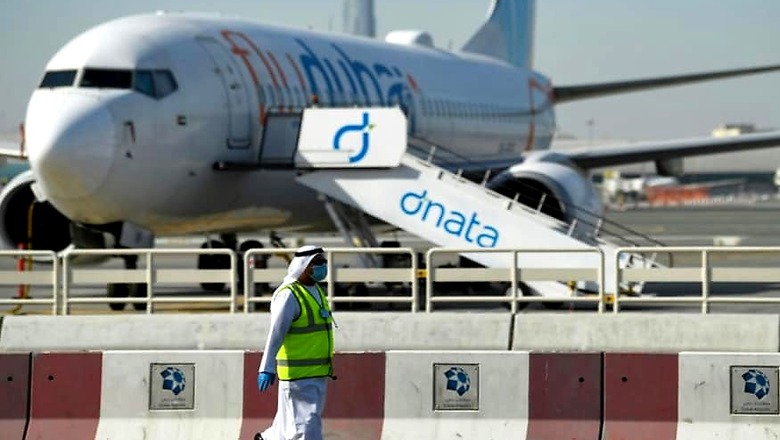
views
New Delhi: Last year, the promised land began rising on 25,000 square kilometres sprawled Saudi Arabia’s northwest Red Sea coast, reaching into Jordan, and joined to Egypt by a great bridge. Larger than 30 New Yorks, Neom—from the Latin Neo, or “new”—and “m” for the first letter in mustaqbal, the Arabic word for “future”—will be a hub for renewable energy, biotechnology, media, and entertainment, filled with smart buildings and robots: A new kind of Saudi Arabia no longer dependent on oil.
Prince Mohammad ibn Salman ibn Abd al-Aziz al-Saud’s city is the most ambitious civilizational project since the emperor Marcus Traianus seized Arabia to safeguard Rome’s trade with India and laid the ground for great cities like Petra, Hejra and Mada’in Saleh.
Earlier this month, though, gunshots rang over in this utopia, fired amidst tribal protests against the project—among a slew of signs that the future that’s being built might be less than roseate. Plunging oil prices, and the prospect of long-term disruptions to global energy markets, are opening up fractures in West Asia’ polities, raising the spectre of a coming wave of geo-political crisis.
This ought to have been an opportunity for India to project itself as a reliable strategic partner, by participating in mitigation and positioning itself to assist with post-crisis reconstruction. Instead, India seems grimly determined to shoot its new opportunities in the back of the head.
Modi Govt and the Persian Gulf
From 2016 on, Prime Minister Narendra Modi’s government has steadily enhanced India’s relationship with the Persian Gulf monarchies. Saudi Arabia and India have expanded their relationship across the board, from trade to counter-terrorism. The prime minister also invested in personal relationships with Gulf rulers: last month, a court in the United Kingdom even charged India with violating international law by capturing and rendering the runaway daughter of Dubai’s ruler, Mohammed bin Rashid al-Maktoum.
The gains have been manifest: on issues like Kashmir, Saudi Arabia has maintained a stoic silence, breaking ranks with long-standing ally Pakistan. Last year, the Organisation of the Islamic Conference even invited India to attend, for the first time since 1969.
But the toxic anti-Muslim hate-speech unleashed online—often by the Prime Minister’s supporters, in the course of the coronavirus is undoing those hard-won diplomatic gains. The backlash has been sharp: from UAE royal Hend al-Qassimi to Saudi cleric Abdurrahman al-Nassar and scholar Abidi Zahrani, influential commentators across West Asia have called for action against communalism in India.
Put simply, anti-Muslim propagandists have given a handle to those in West Asia who have long argued that religious solidarity should guide their relationship with India, not geopolitical interests.
Even though the prime minister and Indian diplomats have stepped in to cool tempers, the damage is likely to persist. True, the more offensive tweets posted by some Indians in the UAE have been deleted. But there’s nothing to suggest the volume of communal invective online has diminished—and that means continuing damage to India’s reputation.
For India, statistics demonstrate, the potential costs of such a breakdown won’t be trivial. Eight and a half million Indians—over a fourth of all NRIs—live in the six Gulf states, sending home the biggest share of the $79 billion in remittances India receives. Fifty-three percent of those migrants come from Uttar Pradesh, Bihar and Rajasthan alone, states with flailing economies and poor employment prospects.
Saudi Arabia, at $34.03 billion in 2018-2019, and the United Arab Emirates, at $60 billion, are India’s fourth and the third-largest trading partners. India hopes to attract some $75 billion in infrastructure investments from the UAE alone. Indian companies, moreover, have deep interests in West Asia: Larsen and Tubro, for example, has a key role in the high-speed rail project linking Mecca and Medina, while Tata, Wipro, TCS and Shapoorji & Pallonji all have a region-wide presence.
Even though leaders in West Asia might not wish for the relationship to be derailed because of issues like hate-speech, the pandemic has weakened the political legitimacy of the fragile regimes which govern the region.
Saudi Arabia's Vulnerabilities
The killing, this month, of anti-Neom tribal land rights protestor Rahim al-Howeiti illustrates the slew of social strains that Saudi oil wealth has historically papered over. Now, with oil prices collapsing, the regime vulnerabilities have sharpened. In 2015, when Saudi King Salman bin Abdulaziz Al Saud rose to the throne, the country's foreign exchange reserves were $732 billion; inside four years, they lost $233 billion. GDP has also declined, from $25,243 in 2012 to $23,338 in 2018, according to the World Bank.
International Monetary Fund estimates suggest net debt will hit 19 percent of GDP this year and 27 percent next year, while the pandemic and the oil crisis it has sparked off and the oil crisis could push borrowing to 50 percent of GDP by 2012.
Sixty percent of Saudi Arabia’s GDP comes directly from oil revenues, and oil-sector earnings account for almost two-thirds of the government’s budget. Iran, Iraq, Qatar, and Kuwait are even more dependent on oil revenues.
“The collapse of Saudi Arabia’s economy”, analyst David Hearst has noted, “which for decades has been the engine room of the economy of the whole region, would quickly be felt in Egypt, Sudan, Jordan, Lebanon, Syria, Tunisia - all of which send millions of their workers and professionals to the kingdom and whose economies have grown to depend on their remittances”.
India is among the countries that would be hard-hit as scholar Karen Young has pointed out, warning sirens have been blaring across West Asia ever since 2014 when the oil market downturn began. Natives-First employment policies have come online across the Gulf monarchies, and large numbers of low-wage jobs have been purged from a stalling construction sector.
The Ministry of External Affairs’ data shows that the flow of migrant workers from India to the Persian Gulf states has been in steady fall since 2015, from a peak of over 600,000 that year to just over 300,000 in 2019.
Faced with shrinking economic opportunities, West Asia is likely to see the same kinds of nativist and xenophobic tendencies that other regions of the world have experienced in similar circumstances. India’s new reputation as a region hostile to Muslims could make it a target.
In some countries, like Iraq, Syria, Libya and Lebanon, experts also fear that the pandemic—which has mercilessly exposed anaemic state capacity—could lead to renewed influence for millenarian groups like the Islamic State. Iraq has had a transitional government since 2019, crippling its ability to organize a coherent response to the pandemic—especially since its healthcare infrastructure has been devastated by decades of invasion and civil war. Now, to top it all off, Iraq’s main revenue source, oil, is drying out.
As James Dorsey has pointed out, the empowerment of militant groups, “particularly where they fill a gap without coordinating with government, potentially raises security issues as militants capitalise on their ability to show up the state’s lack of capability”. Fighting against religious militants who challenge their legitimacy, Persian Gulf regimes will have to be sensitive to charges they’re siding with countries hostile to Islam, or Muslims.
The worst-case scenarios aren’t hard to imagine: a West Asia where India is unpopular and Indians unwelcome; a long-drawn recession which deprives India of key markets; geopolitical strains which engender chaos and imperil India’s sources of energy. In such a scenario, the sustained diplomatic effort made over a decade to cast India as a key strategic partner for West Asia would be undone, leaving the field open to China.
Even if reality doesn’t turn out to be quite so bleak, there’s a lesson New Delhi needs to learn: In a globalized world, foreign-policy objectives can’t be insulated from domestic politics. Like so many countries before it, India will have to realize that what it does at home has impacts, for better or worse, on its ambitions and aims on the global stage.



















Comments
0 comment